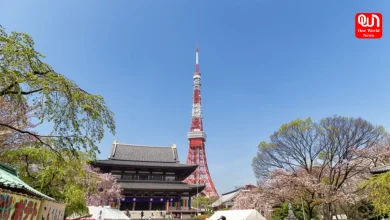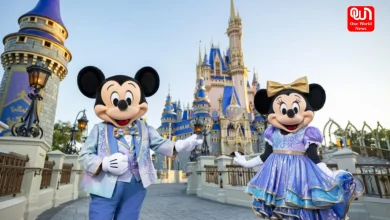The Babu And The Bazaar: A Journey Through 19th And 20th Century Calcutta
Step into the world of 19th and 20th century Calcutta, a captivating era that still echoes through time, at The Babu and the Bazaar art exhibition at DAG art gallery, Delhi.
The Babu And The Bazaar: Explore the Vibrant Past through Art at DAG Art Gallery, Delhi
Step into the world of 19th and 20th century Calcutta, a captivating era that still echoes through time. While building a time machine may seem like an impossible task, there is a remarkable alternative that can transport you effortlessly back in time – paintings. These exquisite works of art possess the power to unravel the tapestry of history and immerse you in the rich culture of a bygone era. If you seek such an enchanting journey, then the DAG Art Gallery in Delhi is the perfect destination.
Rediscover the allure of Calcutta, a city that once flourished as a second home for the Britishers. A hub of bustling trade, thriving culture, and vibrant life, Calcutta radiated a unique energy that permeated every corner of its streets. This very essence has been masterfully captured in The Babu and the Bazaar exhibition at the DAG Art Gallery, an extraordinary showcase that breathes life into the past.
Allow yourself to be transported to the heart of Calcutta’s culture, where the renowned Kaali temple at Kalighat served as a magnet, drawing people from all walks of life in search of blessings and livelihood. Adjacent to this sacred abode stood a bustling bazaar, a vibrant marketplace teeming with an array of memorabilia, trinkets, and artistic wonders. Amongst these treasures, watercolor paintings, now known as Kalighat pats, reigned supreme, embodying the spirit of the era.
As you step further into The Babu and the Bazaar, a remarkable world unfolds before your eyes. This exhibition is a storyteller’s paradise, revealing captivating tales from Hindu mythology, folklore, and the intricate tapestry of daily life in Calcutta during that time. It presents a unique juxtaposition between the opulent Babus, representing the affluent strata of society in the early 19th and 20th centuries, and the vibrant culture of the Bazaaris, representing the common people. The stark contrasts and underlying tensions between these two worlds become beautifully apparent, capturing the essence of an era defined by its diverse social fabric.
Personally, I found immense pleasure in the satirical depictions of the Babus, whose wealth often shielded them from the realities of the world. It is a timeless reminder that the ignorance of the privileged towards worldly problems is an unfortunate constant throughout history. These thought-provoking artworks serve as relevant reminders of the societal hypocrisies prevalent at that time, many of which continue to persist even today, casting a disheartening shadow on the progress we hoped to achieve.
Yet, amidst these reflections on societal struggles, The Babu and the Bazaar exhibition offers an unforgettable encounter with folklore. Growing up, I was captivated by my grandmother’s cornucopia of tales, and to stumble upon a painting that contained her stories was nothing short of magical. If you are one of those lucky kids who grew up listening to folktales like me, you are in for a treat. One of the folktales my grandmother often told me was of the ‘Sheyal Raja’ (Fox King). And lo and behold! There was a painting of the ‘Sheyal Raja.’
Read more- Experience Artistic Marvels At The National Gallery of Modern Art , Delhi
Unveiling bold and amusing narratives, The Babu and the Bazaar exhibition showcases one whimsical painting series that I found particularly amusing – the ‘Babu Subservient.’ These paintings ridicule the patriarchal Babu who was expected to be in control of his household and women. However, ‘his woman’ is shown seizing control and dominating him, while his size diminishes along with his ego.
Among the array of captivating series, another one that particularly captured my attention was that of the ‘Amorous Couple.’ These thought-provoking paintings depict the clandestine encounters between a sex worker and a Baabu, a liaison shrouded in secrecy and moral complexity. The sex worker, a widow, brings to light the harsh realities faced by women in society during that era, as well as the callous attitudes prevalent towards their plight. Each brushstroke revealed a tale of forbidden desire, power dynamics, and societal limitations, daring us to reflect upon the injustices that persist even today.
Within the collection lies a particularly poignant metaphorical painting – ‘Cat stealing a Prawn.’ This captivating artwork masterfully portrays the corruption that permeated society, where the wealthy and powerful would unjustly exploit the poor, leaving them famished and further impoverished. Its message resonates deeply in our modern world, where similar injustices continue to plague society, highlighting the timeless relevance of these artistic expressions.
The ‘Sundari’ paintings, undoubtedly, stand as the crown jewels of the exhibition. With an ethereal beauty that transcends time, these masterpieces flawlessly capture the elegance and virtues of women during that era. They serve as a testament to the enduring strength and grace that define the female spirit, inviting us to reflect on the timeless qualities that empower and inspire.
The religious paintings on display offer a breathtaking glimpse into the vast tapestry of Hindu mythology. From the beloved tales of Mahabharata and Ramayana to the enchanting stories of Yama, Goddess Durga, Kartik, Balarama, and even Shakuntala, the exhibition presents an extraordinary array of paintings that breathe life into these cherished narratives. Each stroke of the artist’s brush unveils a chapter of ancient lore, evoking a sense of wonder and inviting us to rediscover the timeless wisdom embedded within these tales.
The Babu and the Bazaar exhibition at the DAG Gallery is not confined to a single medium. Alongside the countless oil paintings, a diverse collection of glass paintings and reverse glass paintings adorn the gallery walls. These lesser-known forms of artistry further enrich the experience, offering a captivating glimpse into the boundless creativity that thrived during that era.
As a fervent admirer of art and history, I implore you not to miss the opportunity to visit The Babu and the Bazaar exhibition at the DAG Gallery. Within its walls, humor, wit, and the essence of life intermingle, painting a vivid tableau of a vibrant past. Each artwork possesses a unique voice, speaking loudly and boldly, eager to share its story with all who lend an attentive ear. So, let the paintings guide you on this remarkable journey through time, as you uncover the hidden treasures of an era long gone but forever etched in the annals of our collective memory.








